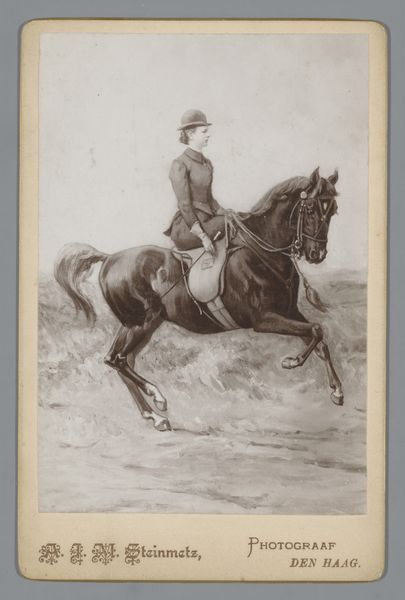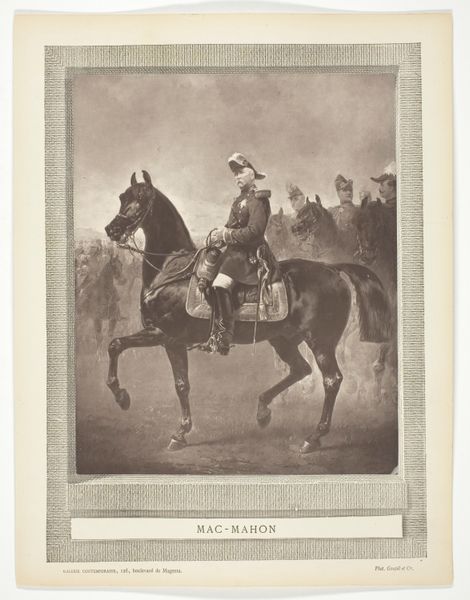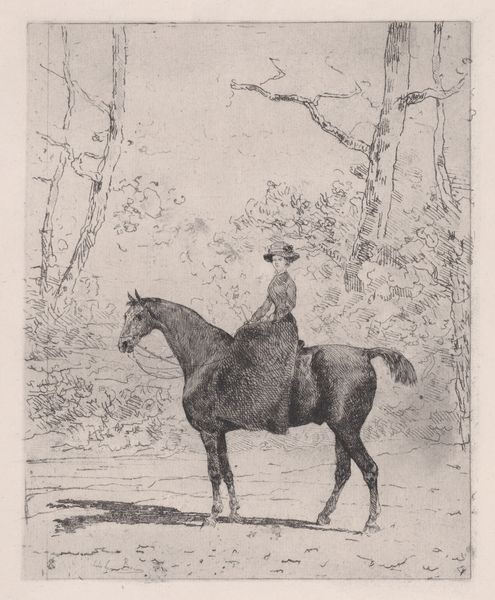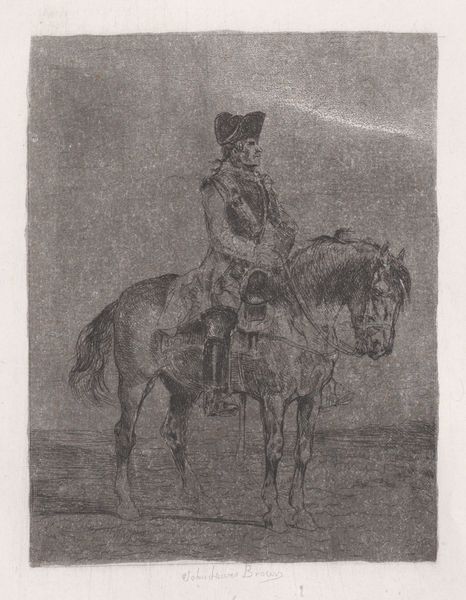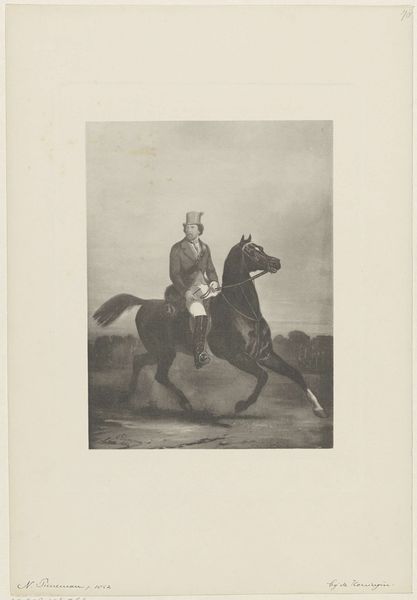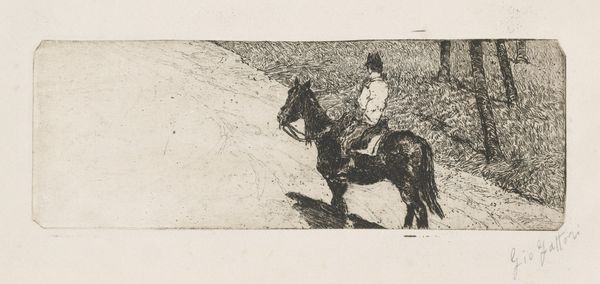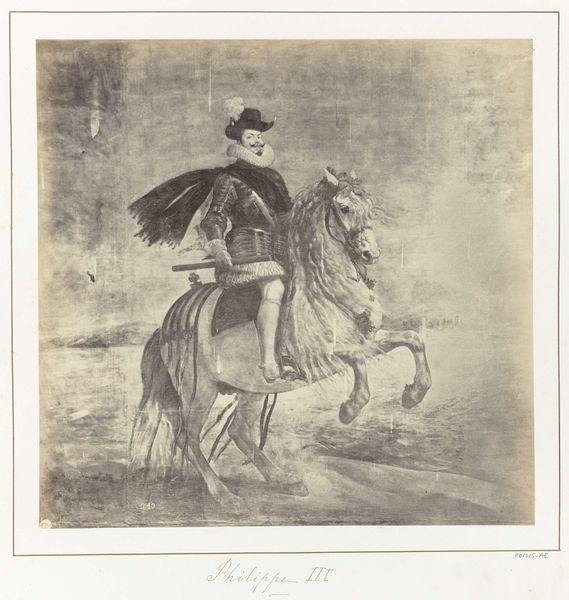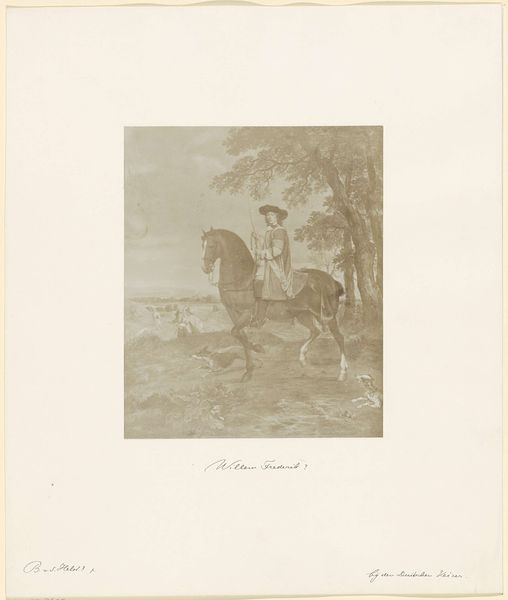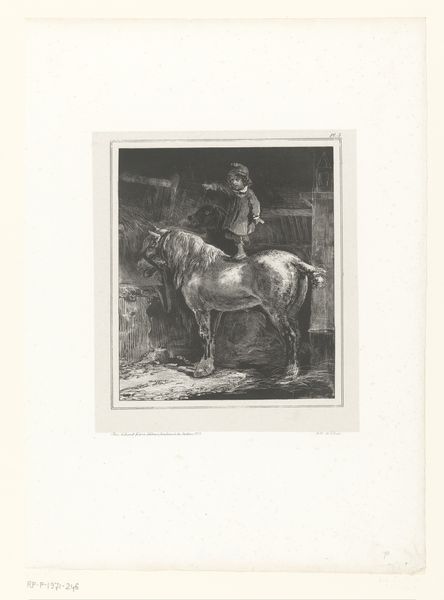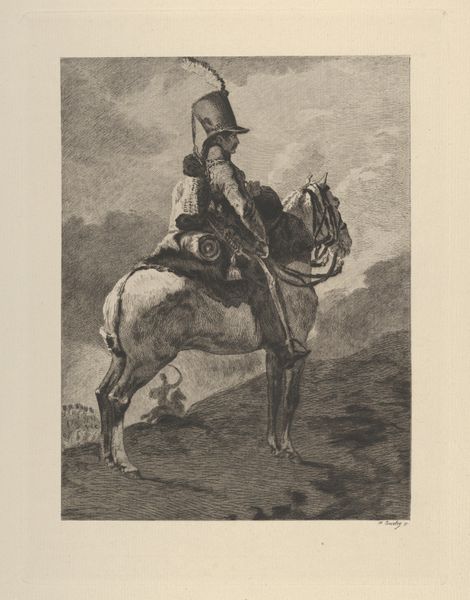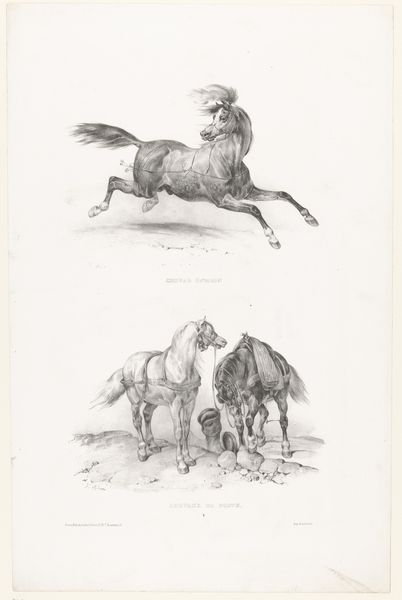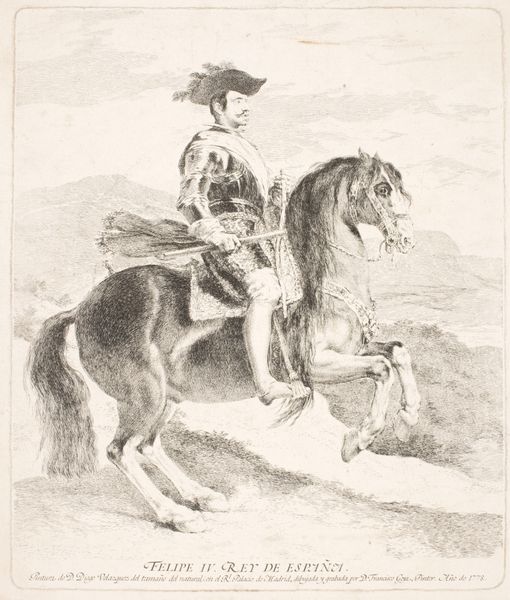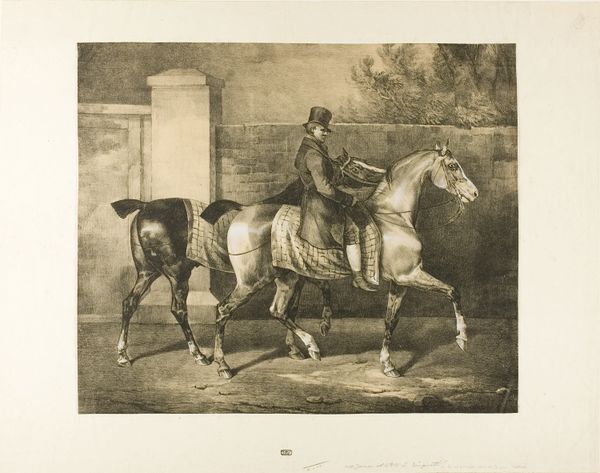
drawing, print, graphite
#
portrait
#
drawing
# print
#
landscape
#
graphite
#
history-painting
#
academic-art
#
realism
Dimensions: height 195 mm, width 134 mm
Copyright: Rijks Museum: Open Domain
Editor: Here we have a print titled "Equestrian Portrait of Wilhelmina, Queen of the Netherlands" made sometime between 1895 and 1949. The print, done in graphite, depicts a young Queen Wilhelmina riding a horse. I am intrigued by the clear skill it took to render the figures and the movement of the horse. How should we look at this work? Curator: Given my focus, I'm drawn to the production of this print and its social context. Consider the medium, graphite. Its accessibility meant this image could be reproduced and widely circulated, becoming a symbol of Dutch national identity. Who was consuming it and what purpose did this image serve in constructing her public image? Editor: That's interesting! I hadn't considered the choice of graphite as a means for broader distribution. The idea of reproducibility makes sense, particularly for a royal figure. What was involved in its making? Curator: Exactly! The process of creating a print involved several skilled laborers, not just the artist who initially conceived the image. There's the draftsman, of course, but also the printmaker and the publisher, each contributing to the final product that enters circulation. This network of makers connects artistic skill with industrial means of distribution and consumption. The choice of materials—graphite on paper, specifically—also dictated its reach within society. Where and how do you imagine this kind of printed image would be seen or used? Editor: I would imagine it was printed in newspapers or displayed as posters to bolster patriotism for the country, as you said, and promote the image of the Queen. So, its value resides not just in the image, but its social and material life? Curator: Precisely. We learn about the modes of production, labor involved, materials utilized, and ultimately how that shapes the reception and consumption of art. Examining the means of creation challenges the singular notion of the artist's touch and acknowledges the interconnectedness of art within society. What might studying this image tell us about Dutch society during that period? Editor: This conversation shifted my perspective. I now see this "Equestrian Portrait" not just as a pretty portrait, but as an object deeply embedded in a network of labor, material production, and social power! Curator: Agreed, considering the work within this perspective allows a richer appreciation of both the historical context and the complexities of its making and cultural function.
Comments
No comments
Be the first to comment and join the conversation on the ultimate creative platform.
